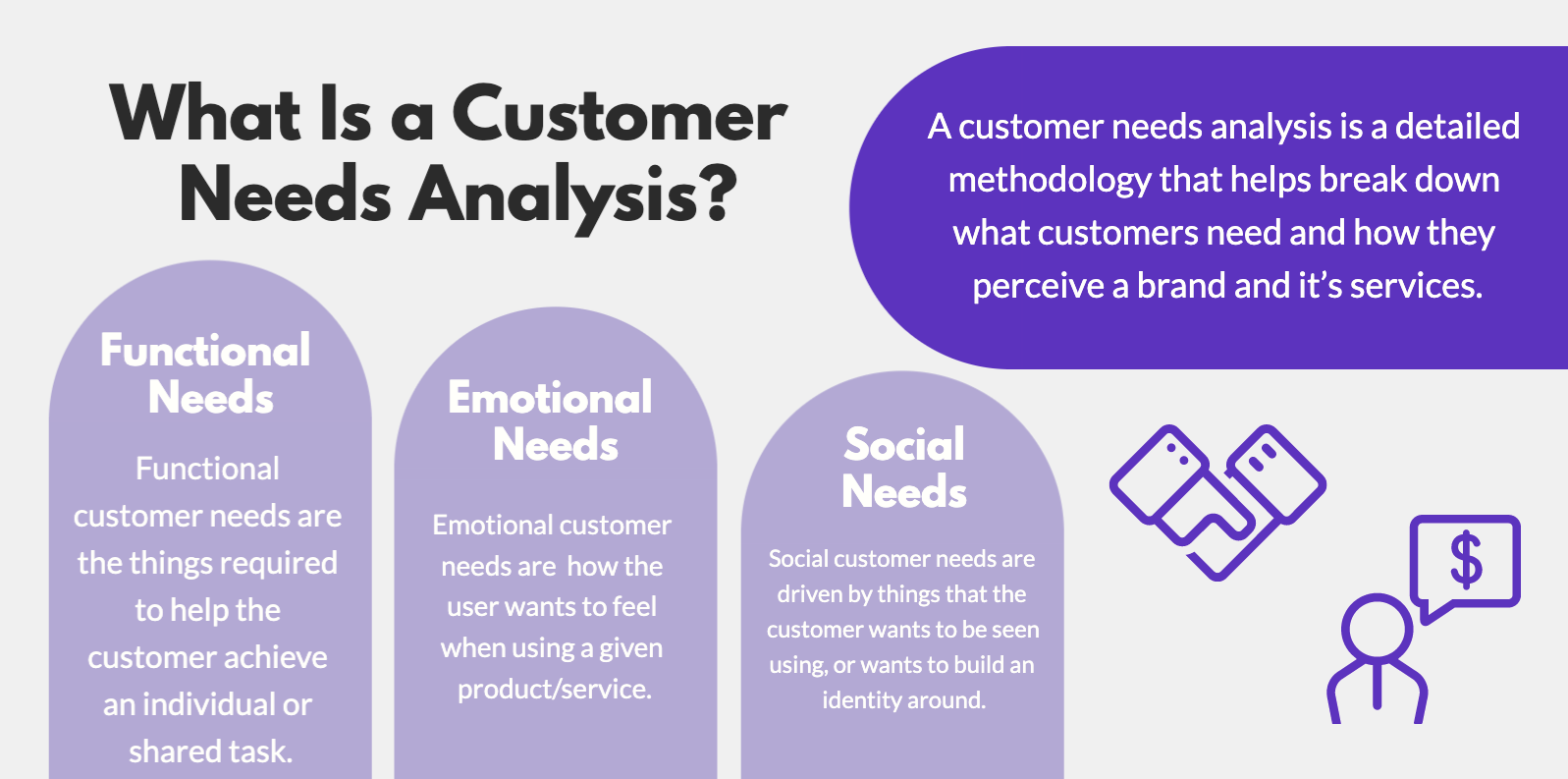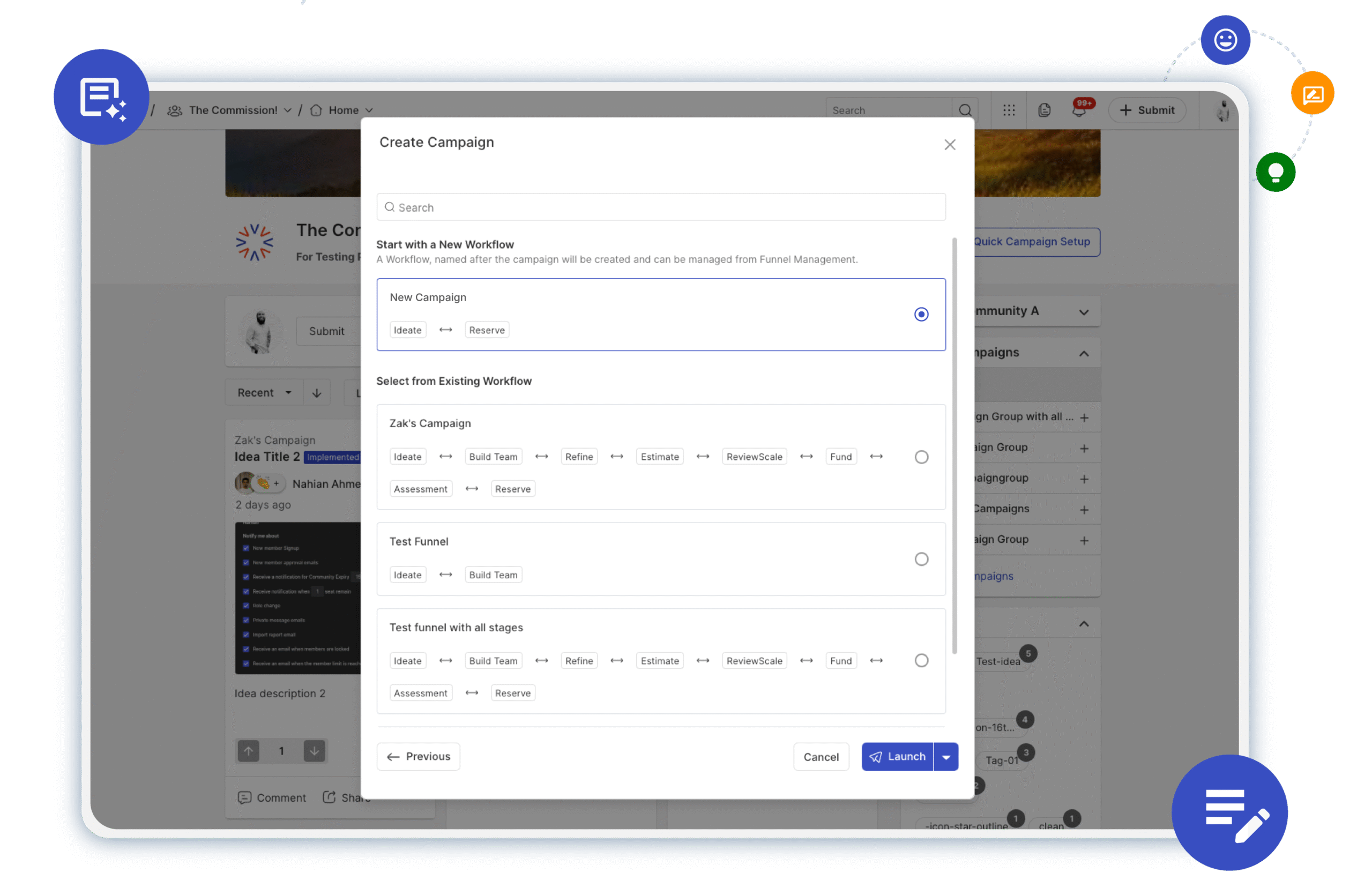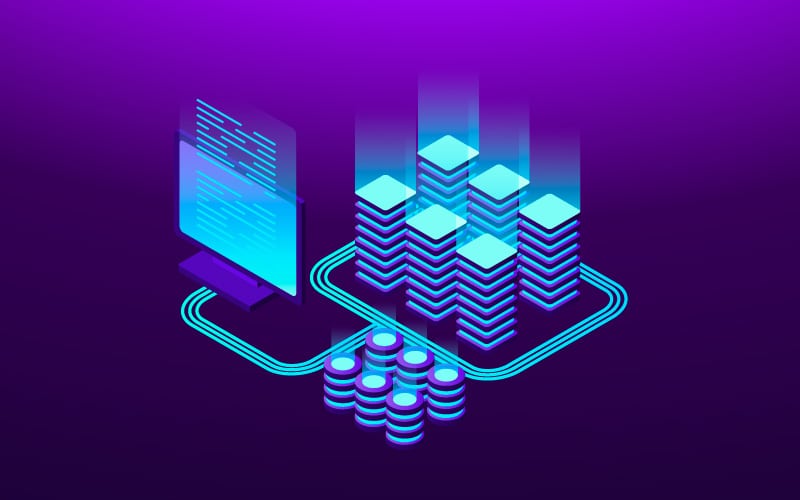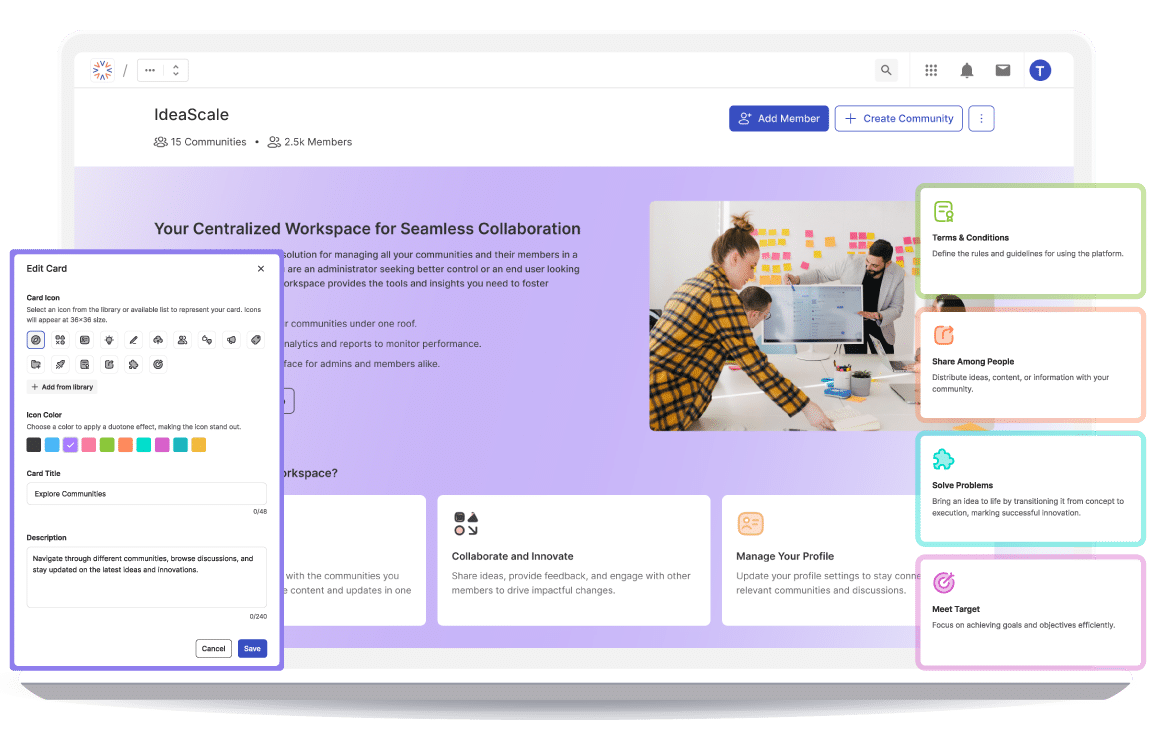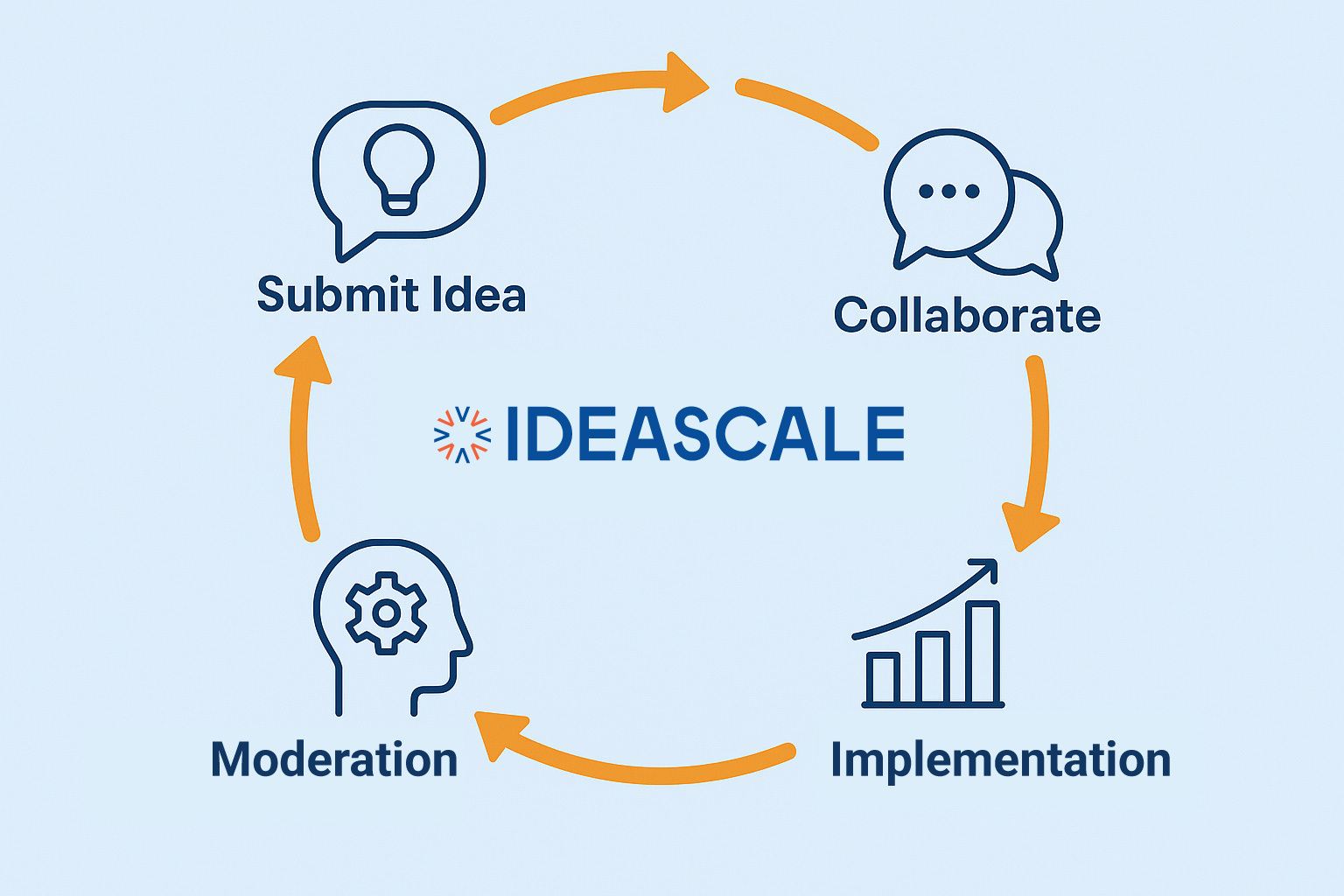Table of Contents
Understanding how to provide the best possible customer experience is all about addressing your customer needs. While this can seem like a simple process, there are many complex ways that customer needs to interact with your product/service. Creating a customer needs analysis on a shared board can be one of the most effective ways to visualize these needs and develop a strategy to meet them.
In this article, we will define customer needs, analyze their importance, and walk through 5 simple templates that help address and prioritize them.
What is Customer Needs Analysis?
A customer needs analysis is defined as a detailed methodology that helps break down what customers need and how they perceive a brand and its services.
Conducting a customer needs analysis will be an ongoing process and requires ample customer data to process accurately. There are many different touchpoints to assess, whether within a specific product or comparative opinions between brands; many different facets make up a customer needs analysis.
One key focus of the customer needs analysis is taking a means-end approach to needs evaluation. Customers make their decisions based on what product will fulfill their goals in the most valuable way. It’s key then to understand their goals in relation to their needs and how you can most effectively make this connection.
Customer Needs
Customer needs are the motivations that the consumer has to use or purchase a product/service. Whether currently known or unknown, their needs will have a decisive impact on what they use/purchase and why they do so.
Customer needs can be broken down into many different factors that push people to use or purchase a product/service. In order to understand their behavior, it’s important to break down their needs and the reasons behind their decisions.
There are three different kinds of customer needs:
- Functional Needs, Social Needs
- Emotional Needs
Functional customer needs are required to help the customer achieve an individual or shared task. These needs are defined to reach a tangible goal through a product/service.
Social customer needs are driven by things the customer wants to be seen using or intends to build an identity around. These needs are usually only part of the larger picture but can often determine the final choice that a user makes. Social customer needs are often based on design differences or aesthetic choices that make one product more socially desirable than another.
Emotional customer needs are also secondary to functional customer needs, but in this case, they relate to how the user wants to feel when using a given product/service. These needs are primarily based on user preference and personal history. While it can be hard to target these needs, they can be good indicators of use patterns for certain consumer bases.
Within these three categories of customer needs, there are many specific needs to be met, such as functional requirements, pricing, design specifics, moral concerns, and so on. Uncovering customer needs is critical to clarify their motivations to buy, and a customer needs analysis is the perfect tool to reveal their most essential needs.
Common Customer Needs
When thinking about customer needs, it’s helpful to start with some established needs and work towards which ones apply to your users. Here are some common customer needs.
Value
One of the first considerations for a customer’s needs is the value or price a product carries. Customers have a specific budget that they need products to fall into, and that price needs to relate to the value for money posed by the product. Being less expensive is nice, but if it means the product is unreliable, it won’t meet the customer’s needs. Value for money is much more important than the price point itself. Different markets have different standards for pricing and expectations, so it’s up to your customers to determine what a reasonable expectation is.
Effectiveness
In order to meet customer needs, a product must effectively solve their problems. Effectiveness represents the most core functional needs and cannot be compromised. The product must clearly solve an existing problem and do so efficiently. Most customers will rate this need higher than the product’s aesthetic value, so it must work as advertised.
Aesthetic
Aesthetic needs are more apparent in physical products like clothing and accessories than digital ones because people want to associate themselves/their business with a popular brand. Does the product make the customer feel good about themselves? If so, it has met their aesthetic customer needs. This is more of a social need than a functional one in most cases, but it could still link an important part of their experience depending on the product.
Risk
Customers don’t just want the product to work once; they want to sign up knowing they’re paying for a dependable solution that they can trust repeatedly. If the product isn’t credible, their competition success could be at risk. Ideal products will be risk-free, trustworthy, and reliable to deliver results over and over again.
Usability
Usability is a big factor for internal and digital products because it can make or break the user’s experience. With physical products as well, they should be as simple as possible to reduce any friction with onboarding or confusion with the customer base.
Additionally, usability needs can be cross-referenced with existing systems. Especially online, compatibility between different softwares is critical for widespread adoption and can affect how usable a solution is to the customer.
Consider how valuable simplicity, usability, and compatibility are to your user base when prioritizing their needs.
Learn more: What is a Customer Journey Map?
Why Prioritizing Customer Needs is Important?
Understanding customer needs is critical when addressing the purchasing patterns and reasoning of customers. At their core, customer needs represent your user’s identity and personal requirements. These details are foundational when creating empathy with your users and building bridges between your product and customers.
Possibly the most prominent reason customer needs are important is that fulfilling them ensures user satisfaction, loyalty, and a flawless customer experience. All of these things can be achieved by creating a product/service that enables customers to satisfy their unique needs and desires. A customer needs analysis helps diagram which needs correspond to valuable insights and how they can be actionable in the future.
Creating a customer needs analysis allows you to prioritize design, marketing, and product decisions based on real customer feedback. Doing so means you can more accurately target the needs of your customers and convert them based on real insights.
Additionally, you can use your customer needs analysis for future projects. Many considerations, opinions, and comparisons will be valuable for different projects, but they should be built upon with new data to ensure they are still accurate.
How to Conduct a Customer Needs Analysis
Creating a customer needs analysis applies the values and importance of customer needs to an online whiteboard where you diagram, analyze, and create action on your customer feedback. Here are the main steps to completing a customer needs analysis.
Step 1: Discovery
Before gathering customer feedback, a customer needs analysis starts with discovering a customer base. Take existing data from purchasing patterns and create funnels for repeat customers, first-time customers, big spenders, leads, and any other categories that apply to the data set. This initial data will be key to discovering where you need more information and what trends have appeared in the past.
Ideally, the data will provide a good mix of people who have a successful experience and those who make complaints, giving a broad spectrum of opinions and feelings towards the product.
Step 2: Gather Customer Feedback
This step is one of the most important parts of a customer needs analysis. After diagramming the initial data, you need to open up a source of communication to your customers and gather as much feedback as possible. Most of this feedback will come from survey responses through multiple delivery systems.
When building the customer needs survey, ask targeted questions about their needs, values, and success rates with the product. If you’re auditing a specific section of your experience, make sure to focus there as well. Additionally, include an open-ended question to gather anecdotal feedback about their experience to see if their needs are being met.
Surveys aren’t the only place to collect data from customers. Take a look at their usage patterns to decipher how they use the product. This can help expose what works best for them and what they avoid. Additionally, you can track your social media exposure to see how people organically interact with your brand online.
Customer feedback is the backbone of the customer needs analysis, and collecting plenty of feedback is key to understanding customer needs and creating a positive experience.
Analyze Trends, Patterns, and Responses
After collecting customer feedback, it’s time to classify it in relation to the customer’s functional, social, and emotional needs. These channels can be expanded to some of the categories discussed above, including value, risk, and usability.
After grouping the feedback, begin looking into if customer needs are being met, where they are failing, and the reasons for their success/failure. Each reason will inevitably correspond with a specific customer need and will tell a story about what the customer experiences and where the product can improve.
Create Actionable Changes
Understanding the customer is important but only as helpful as you allow it to be. After analyzing the data, you need to create actionable changes that can be implemented into the product. Applying modifications based on the gaps in customer needs is the only way to improve their experience and create targeted solutions.
Using a customer needs analysis is critical because it makes the data more accessible for anyone to analyze. This allows more people to collaborate to create actionable next steps, which is another crucial part of the process. Using an online whiteboard is the perfect way to diagram key ideas, collaborate on creating the next steps, and address customer needs.
The Bond Between Customer Needs and Customer Experience
Customer needs and customer experience are very closely linked; how you address the customer’s needs will determine how positive their experience is. Customer needs can provide a nuanced view into the overall experience of a user. For example, some needs are higher priority than others, so while you might not fulfill 50% of their needs, you handle the other 50% perfectly, so they have an overall positive experience.
Customer experience plays an important part in a customer needs analysis’s “means-end” structure. Understanding the customer’s experience after the dust has settled allows you to map what needs to evoke certain emotions and how that plays into their overall experience. Diagramming needs within an experience like this is a great way to understand how to improve a customer’s experience while meeting their functional, social, and emotional needs.
Looking at customer needs is a great way to determine value in the eyes of the user, not in the eyes of a business. Conducting a customer needs analysis allows you to prioritize these insights.
Learn more: Experience Map vs. Customer Journey Map
5 Templates to Help Analyze Customer Needs
While creating a customer needs analysis works best on a custom whiteboard, there are some templates that help organize customer needs if you want to analyze more specific customer scenarios. Here are five templates that help discover and analyze customer needs.
Persona Map
Creating a Persona Map is one of the first steps to developing a nuanced understanding of your customer needs and is a straightforward way to organize the details of your principal user. Persona maps are abstract portfolios that represent your principal user. While they are fictional, they embody very realistic attributes that personify your consumers. They usually entail users’ assumptions, attitudes, associations with your product/service, and even their personal life.
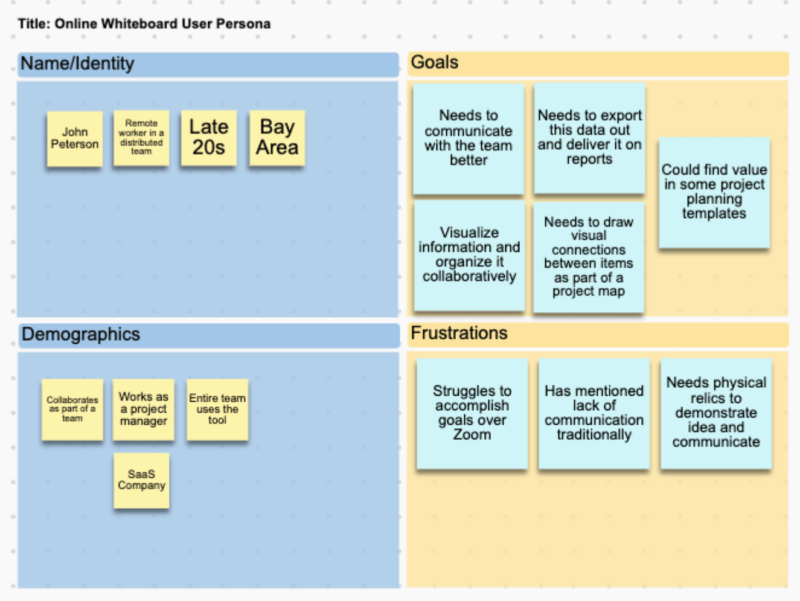
Persona maps create an identity for the principal user, highlight their demographic and personal details, and take a look into their goals and frustrations. Besides simply creating empathy for the customer, persona maps address two of the most important components of customer needs: motivations and frustrations. Prioritizing these sections means you are prioritizing learning about what your customer wants and why they struggle to accomplish it, which are the foundations of their functional needs.
Addressing functional needs directly while creating empathy for your principal user makes the persona map a great option for people looking to prioritize customer needs and learn more about their customers in the process.
Customer Journey Map
Customer journey maps can be scaled to meet a wide variety of customer needs. A customer journey map is the visualization of the experience or journey a customer travels as they are exposed to your product/service. It can follow their tangible actions, assumptions, or motivations through each step of the interaction. It helps tell the story of your customer’s experiences with your brand across all their interactions.
Identifying a customer’s needs through a customer journey map is easiest when diagramming the pain points and intention of each step. Customer journey maps do a great job of breaking down their journey and looking at each segment individually, analyzing how the customer interacts with your product/service and what their intentions are.
When you look at a customer’s journey closely, you can expose the problems with their experience and find places that can be revised to improve their ability to achieve their functional needs.
You can improve their ability to achieve their functional needs and locate their intentions when using your product/service. At different points in their journey, they will have slightly different intentions; as they progress, their intentions will change and evolve.
Customer journey maps are built on customer feedback, and gathering this feedback is crucial in accurately addressing customer needs. CJM’s allow you to map that information to gain a more holistic view of what needs more attention and how you can best meet customer needs across the board.
Retrospective Analysis
Retrospective templates are some of the most flexible boards to use and can be applied to any project to help locate customer needs. Retrospective boards outline what went well, what can be improved, and what actions should be taken from your most recent project.
Using online whiteboards makes editing the retrospective template incredibly easy, and simply adding columns for customer feedback and customer intentions can transition the direction of your retrospective analysis to focus on your customer’s needs.
Having sections of the board designated for customer feedback and intentions allows you to analyze them side by side with your project’s success, meaning you can integrate customer needs into future projects.
Listening to your customers is the easiest way to identify and satisfy their needs, and doing so through a retrospective is a great way to make this a priority every single time.
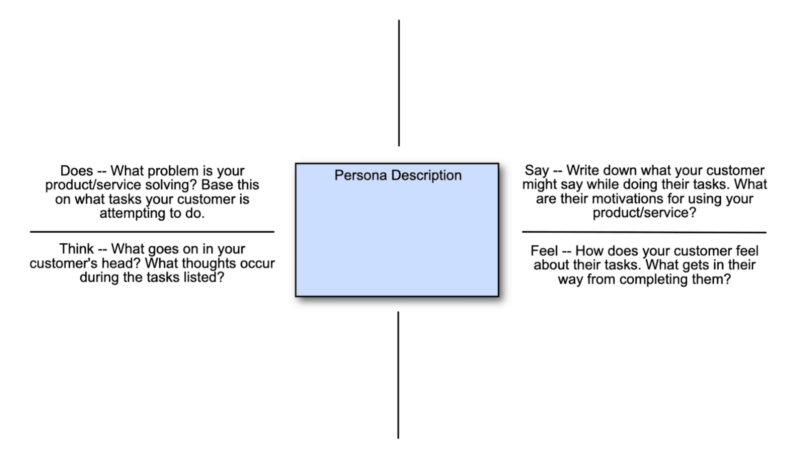
Empathy Map
Empathy maps are similar to persona maps but focus on deliberately creating empathy for your customers. An empathy map is a template that organizes a user’s behaviors and feelings to create a sense of empathy between the user and your team. The empathy map represents a principal user and helps teams better understand their motivations, concerns, and user experience.
Empathy maps target multiple areas of the user experience, which align with what they say, do, feel, and think. These are all important sections to target when analyzing consumer needs and impact each of the three main categories of customer needs.
The “do” and “think” sections focus on the actions your customer takes and how they feel about the general usability, which help expose their functional needs of the product/service.
The “say” section allows you to gain insight into the direct feedback the user provides and also their motivations around using your product/service. This motivational insight is critical to understanding their social needs or the real reason they use the product/service. Aside from their social needs, the feedback you receive will almost always be the most important information regarding their experience.
The final “feel” section allows you to probe into your customer’s feelings and realize their emotional need for the product. Their feelings towards their experience will often display the emotional reason for using the product/service. From that point, you can better understand how to meet their emotional needs.
With the ability to target so many important customer needs, creating an empathy map is a great way to organize your needs and target new solutions for your customer experience.
Stakeholder Map
Stakeholder mapping is one of the more unique ways of addressing user needs because it doesn’t relate only to the consumer but also to the stakeholding interests in your business. Stakeholder mapping is the process of identifying, diagramming, and prioritizing stakeholders by analyzing their influence and interest in a project. Stakeholders are mapped on a four-quadrant matrix with increasing interest and influence.
While this exercise doesn’t specifically target customer needs, it provides an opportunity to understand why your product/service is built and how it can cater to your consumer base more effectively.
Stakeholder mapping allows you to understand not only how influential certain parties are on the trajectory of your business but also how this trajectory can be harmful to your customer experience. When you break down what parties have the biggest influence, you can start prioritizing your customers’ needs.
Customer Needs Analysis Questions
Customer Needs Analysis is a critical process for understanding your customers’ requirements and preferences. Here are some questions and considerations to help you conduct an effective Customer Needs Analysis:
- What problem or pain point is the customer trying to solve with your product or service?
- What are the customer’s specific goals and objectives related to your product or service?
- How does the customer currently address the issue, and what are the shortcomings of their current solution?
- What are the customer’s budget constraints or pricing expectations?
- Are there any regulatory or compliance requirements that the customer needs to meet?
- Who are the primary users or decision-makers within the customer’s organization?
- What are the customer’s timelines or deadlines for implementing a solution?
- What are the customer’s long-term or future plans that may affect their needs?
- Are there any unique industry-specific requirements or standards the customer must adhere to?
- How does the customer define success with your product or service? What key performance indicators (KPIs) are important to them?
- What are the customer’s preferences in terms of product features, design, or customizations?
- How important is post-sales support, maintenance, or training to the customer?
- Have they had any previous experiences with similar products or services, and what was their feedback?
- Are there any competitors or alternative solutions that the customer is considering?
- What are the customer’s communication preferences (e.g., email, phone, in-person meetings)?
- Are there any specific concerns, objections, or reservations the customer may have?
- What is the customer’s overall buying process, including decision-making criteria and stakeholders involved?
- Can the customer provide data or information that might help in the analysis (e.g., usage statistics, demographics)?
- What is the customer’s geographic location and any location-specific needs or preferences?
- How does the customer prioritize their needs and preferences, and are there any deal-breakers?
It’s important to tailor your questions to your specific industry and product/service, and to actively listen to the customer’s responses. Additionally, consider using a combination of open-ended and closed-ended questions to gather comprehensive information. A well-conducted Customer Needs Analysis can provide valuable insights for product development, marketing, and customer service strategies.
Conclusion
Addressing user needs sometimes requires a deep dive into your product/service and a nuanced understanding of your customer experience, and hopefully, these unique IdeaScale Whiteboard templates help you uncover these important elements.
Most Recent Posts
Explore the latest innovation insights and trends with our recent blog posts.

